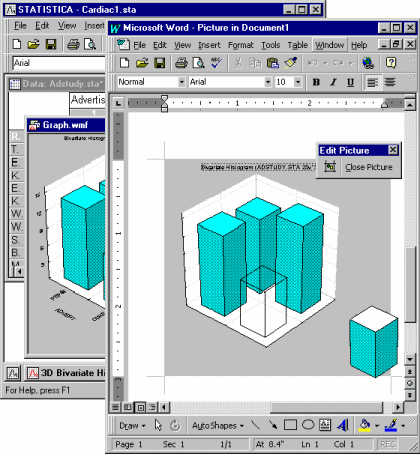What is the Windows metafile graphics format?
The metafile format, also referred to as Picture (a standard Windows graphics format used in Clipboard and disk file representations of graphs; file name extension *.wmf) stores a picture as a set of descriptions or definitions of all components of the graph and their attributes (e.g., segments of lines, colors and patterns of those lines, specific fill patterns, text and text attributes, etc.).
Therefore, as compared to bitmaps (another standard Windows graphics format, see below), metafiles offer more flexible options for non-OLE modification and customization in other Windows applications.
For example, when you open a metafile in the Microsoft Draw program, you can "disassemble" the graph: select and modify individual lines, fill patterns, and colors; edit text and change its attributes, etc.
Note, however, that not all Windows applications support the complete (extended) set of metafile graphics features and attributes supported and used by Statistica, thus some aspects of Statistica Graphs (saved as metafiles) will look different when they are opened in such applications (e.g., rotated and transformed fonts can appear unrotated). For best results, copy Statistica Graphs to other applications using OLE conventions that allow you to invoke Statistica to customize or modify Statistica Graphs pasted into documents of other applications.
In most typical applications, leave this option selected (i.e., set at low resolution, the default setting) in order to create directly printable representations of Statistica Graphs in other programs. Note that, depending on the resolution of your display, these images may not look as "clean" on the screen as when this option is cleared (i.e., when high resolution metafiles are generated). In the latter case, however, the metafiles will be generated using high resolution rendering that, on most high-quality printing devices, will create output with too thin lines (e.g., with a single device pixel lines on a 1200 DPI printer).
